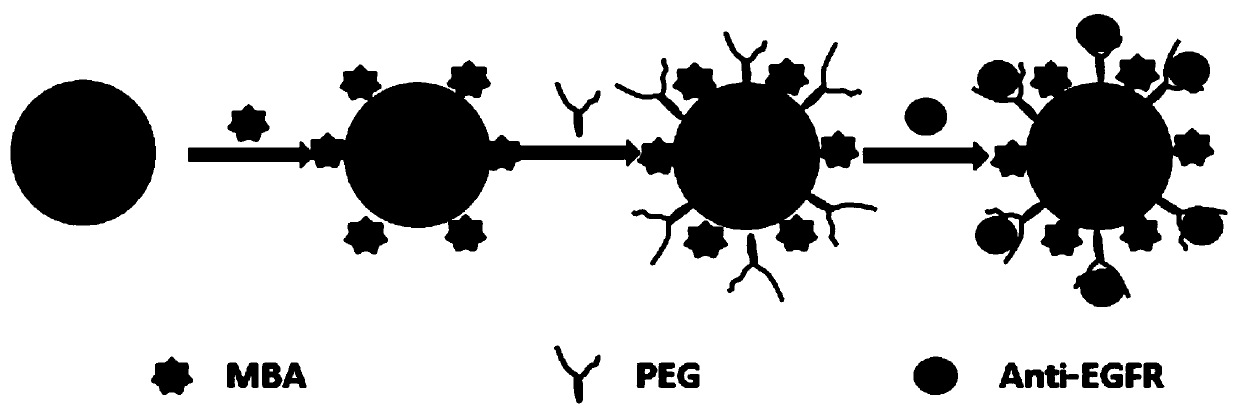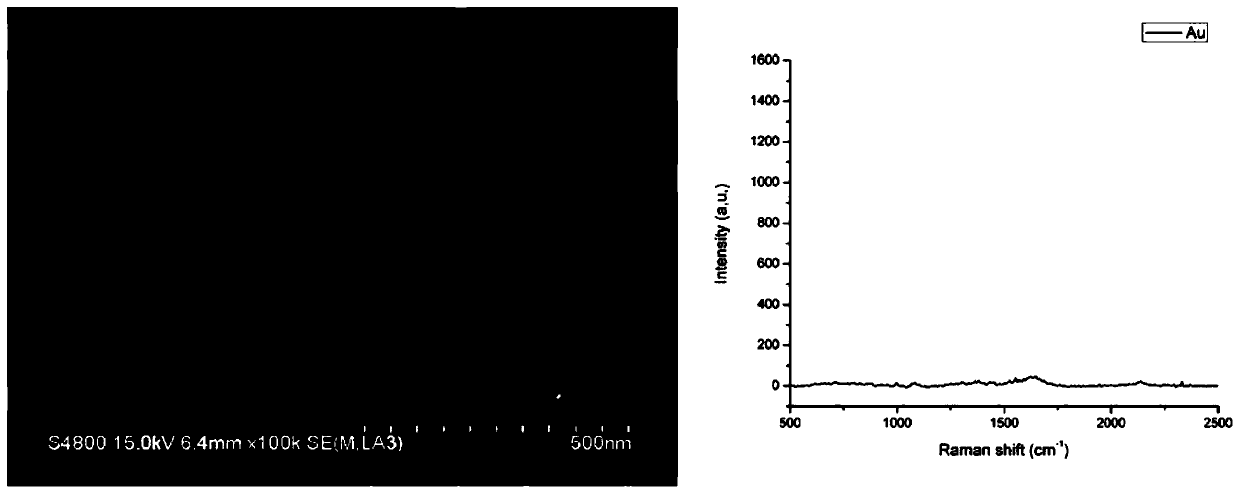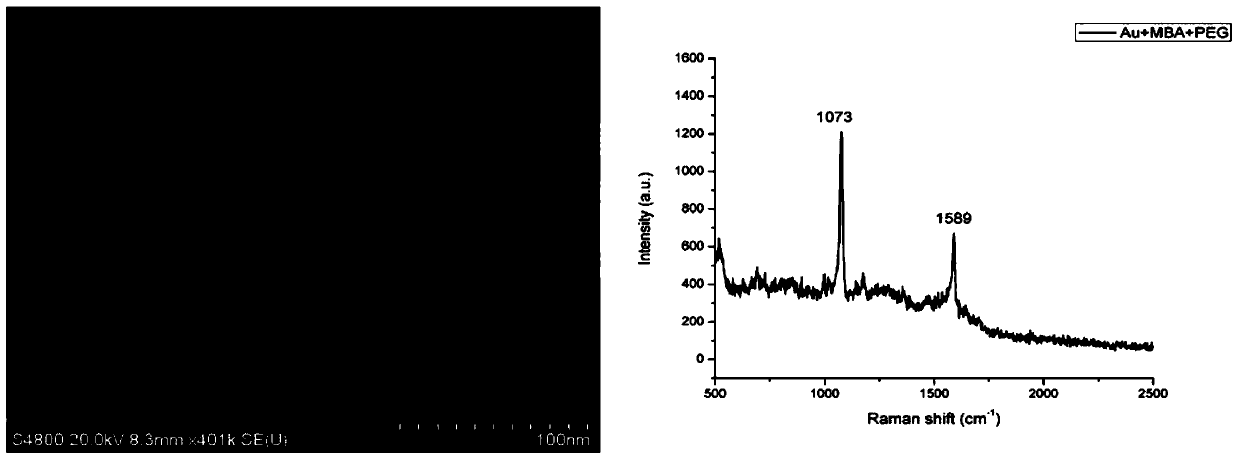Nanoparticles for Raman spectrum detection of oral squamous cell carcinoma tumor cells and preparation method thereof
A technology for Raman spectroscopy detection and oral squamous cell carcinoma, which is applied in the medical field, can solve problems such as probe aggregation, false positive signals, and inability to specifically bind EGFR proteins, saving time and improving accuracy
- Summary
- Abstract
- Description
- Claims
- Application Information
AI Technical Summary
Problems solved by technology
Method used
Image
Examples
Embodiment Construction
[0026] In order to describe the technical solution of the present invention more clearly and completely, the present invention will be further described below in conjunction with the accompanying drawings.
[0027] Please refer to Figure 1 to Figure 4 , the present invention proposes a nanoparticle for Raman spectrum detection of oral squamous cell carcinoma tumor cells, said nanoparticle for Raman spectrum detection of oral squamous cell carcinoma cells is composed of nanoscale gold particles and 4-mercaptobenzoic acid, α -Mercapto-omega carboxyl polyethylene glycol reacted with EGFR antibody; the 4-mercaptobenzoic acid is modified on the surface of the nano-scale gold particles, and the α-mercapto-omega carboxyl polyethylene glycol is modified on the nano-scale The remaining space on the surface of the gold particle that is not modified by the 4-mercaptobenzoic acid, the EGFR antibody is linked with the α-mercapto-omega carboxyl polyethylene glycol, and the nanoscale gold p...
PUM
| Property | Measurement | Unit |
|---|---|---|
| diameter | aaaaa | aaaaa |
| diameter | aaaaa | aaaaa |
Abstract
Description
Claims
Application Information
 Login to View More
Login to View More - R&D
- Intellectual Property
- Life Sciences
- Materials
- Tech Scout
- Unparalleled Data Quality
- Higher Quality Content
- 60% Fewer Hallucinations
Browse by: Latest US Patents, China's latest patents, Technical Efficacy Thesaurus, Application Domain, Technology Topic, Popular Technical Reports.
© 2025 PatSnap. All rights reserved.Legal|Privacy policy|Modern Slavery Act Transparency Statement|Sitemap|About US| Contact US: help@patsnap.com



